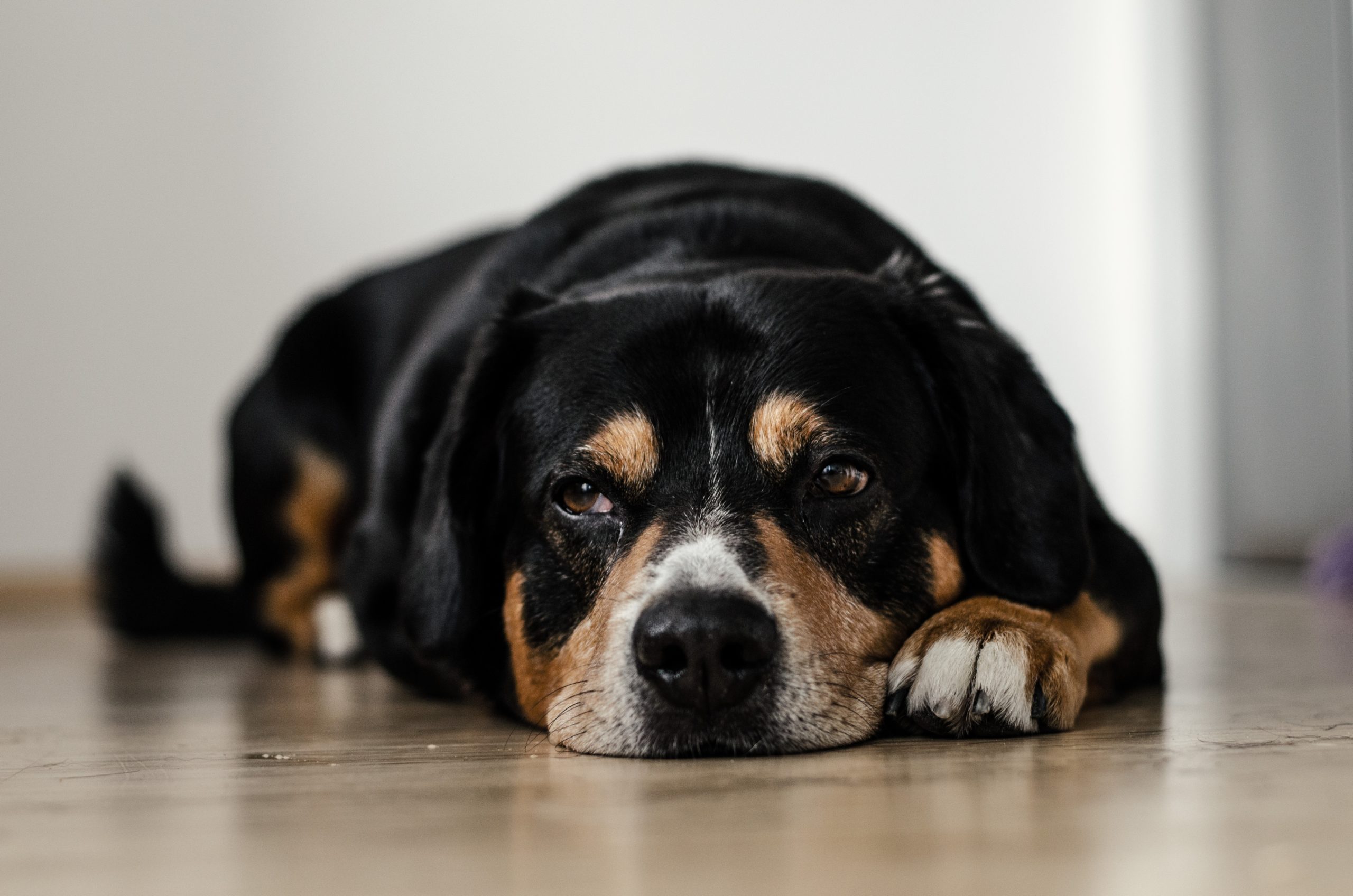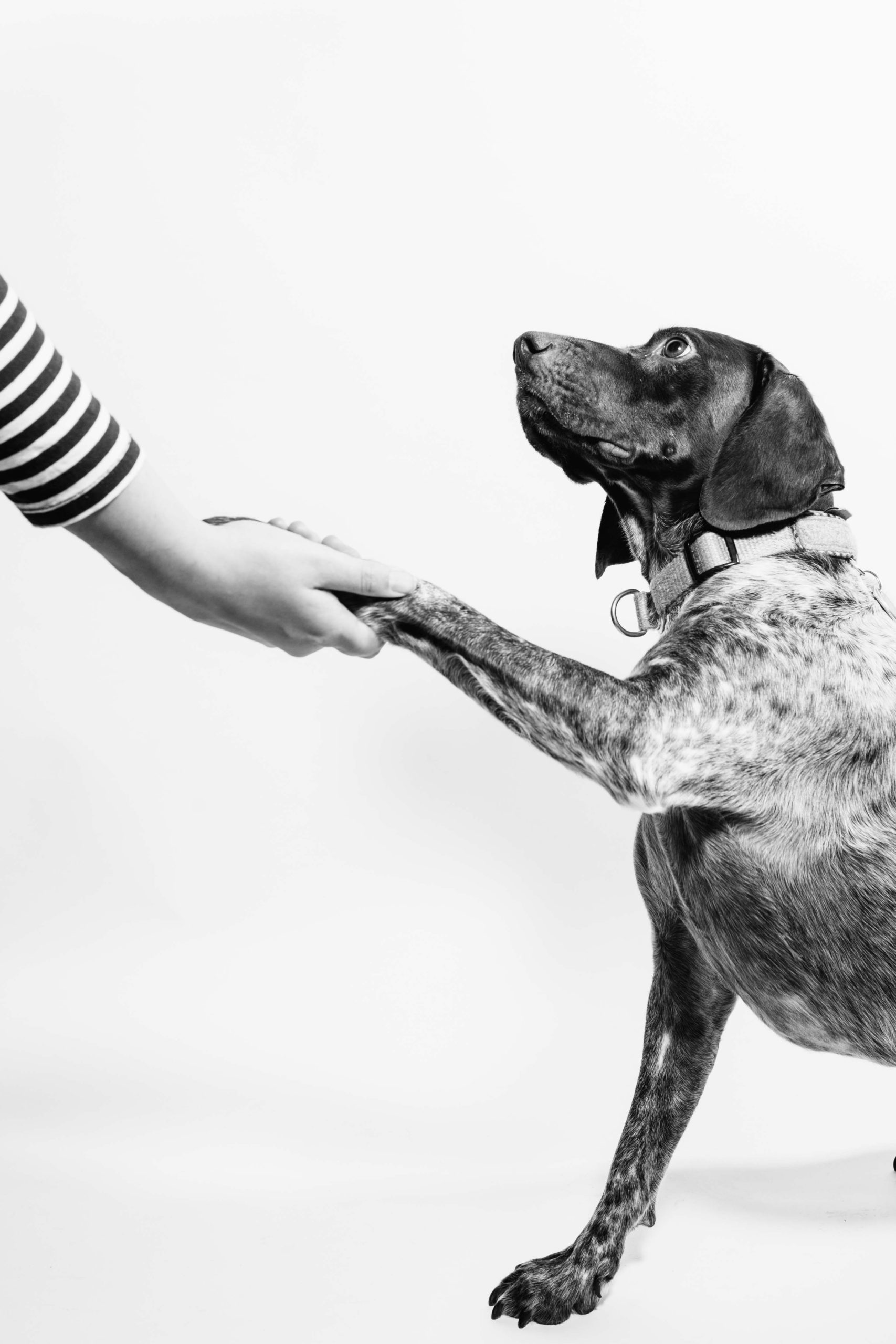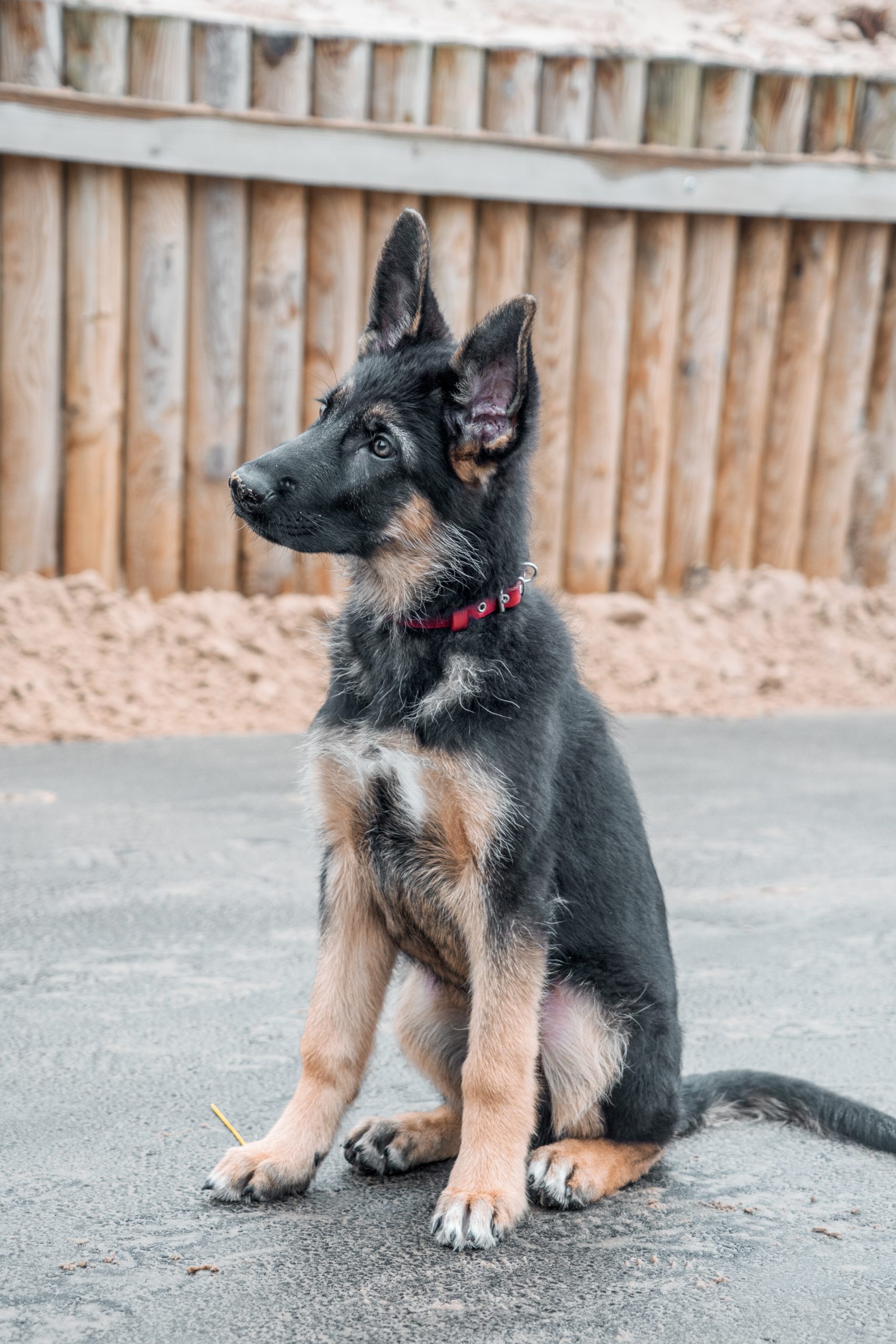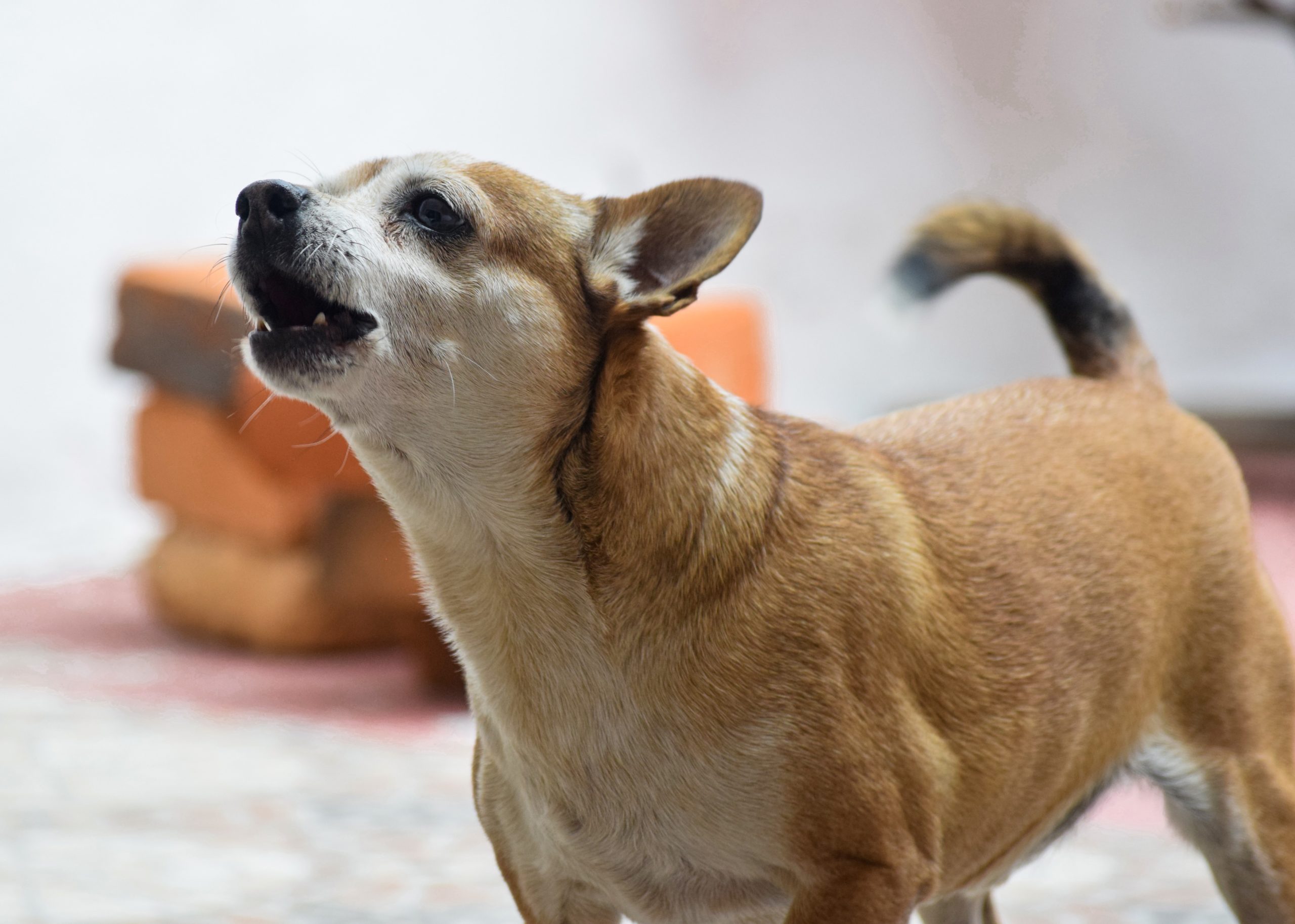Puppy separation anxiety is a common issue faced by many dog owners, where their furry friend struggles to cope with being left alone. This behavioral disorder can lead to disruptive or destructive behavior and may cause distress for both the pet and the owner.
Understanding the symptoms, causes, and treatments of separation anxiety is crucial in helping your puppy overcome this challenge.
In this blog post, we will explore various strategies on how to manage your pup’s separation-related behaviors effectively so that you both can enjoy a stronger bond and a happier life together.
Understanding Puppy Separation Anxiety
Puppy separation anxiety is a condition where young dogs become distressed, anxious and act out when separated from their owners or pet parents.
Identifying Symptoms And Behaviors
Puppy separation anxiety can manifest in various forms, and it’s not always obvious when your dog is experiencing distress. Some common symptoms include excessive barking or howling, destructive behavior like chewing furniture, clawing at doors or windows, or even attempting to escape the house.
Another symptom of separation anxiety is excessive drooling or panting that occurs even though your puppy hasn’t been exercising. They may also start urinating or defecating inside the house despite being trained to go outside.
It’s crucial for pet parents to recognize these behaviors in their pets so they can manage them effectively before they escalate into more severe issues.
Exploring Common Causes
Separation anxiety in puppies can be caused by various factors, including genetics, early life experiences, and lack of socialization.
Puppies that were not adequately socialized during their critical developmental period may have trouble adjusting to new environments or being alone.
Other common causes of puppy separation anxiety include changes in routine or environment, a traumatic event such as abandonment or rehoming, and overly attached owners who unintentionally reinforce clingy behaviors.
Treatment And Prevention
Utilize gradual desensitization techniques, positive reinforcement training, effective crate training, and interactive toys and treats to help prevent and treat puppy separation anxiety; professional help should also be considered.
Gradual Desensitization Techniques
Gradual desensitization techniques are a common approach to managing and treating puppy separation anxiety.
These techniques involve gradually exposing the puppy to being alone, increasing the duration of time they are left alone over time. Here are some tips for implementing gradual desensitization techniques:
- Start small: Begin by leaving your puppy alone for very short periods of time, such as just a few minutes, and gradually increase the length of time they’re alone.
- Practice makes perfect: Repeat this process multiple times a day, gradually increasing the amount of time your puppy spends alone each session.
- Be predictable: Try to establish a consistent routine for your pup so that they know what to expect when you leave and can feel more secure.
- Stay calm: When leaving or returning home, maintain a calm demeanor so your pup can stay relaxed too.
- Rewards help: Provide plenty of positive reinforcement and rewards for good behavior when you return home or when your pup stays calm while being left alone.
By following these gradual desensitization techniques, you can help your furry friend feel more comfortable being left alone and reduce their symptoms of separation anxiety over time.
Positive Reinforcement Training
Positive reinforcement training is a popular and effective method for managing puppy separation anxiety. By rewarding desired behaviors rather than punishing unwanted ones, this technique encourages the development of good habits and reduces stress levels in puppies. Here are some tips on how you can use positive reinforcement when dealing with puppy separation anxiety:
- Start by teaching your puppy basic commands such as “sit,” “stay,” and “come.” These commands serve as building blocks for more advanced training.
- Reward your puppy with treats, toys, or verbal praise every time they perform a command correctly. This helps reinforce good behavior and encourages them to repeat it.
- Gradually increase the time that your puppy spends alone to help them get used to being apart from you. During this process, reward them every time they remain calm and relaxed.
- Use positive reinforcement techniques to encourage your puppy to engage in independent play and activities, such as playing with interactive toys or solving puzzles.
- Be consistent in your training approach and avoid punishment-based techniques, which can increase stress levels and exacerbate separation anxiety symptoms.
- Remember that managing separation anxiety will require patience, persistence, and a willingness to work with your pet’s individual needs.
Using these positive reinforcement training techniques, you can help alleviate the symptoms of puppy separation anxiety while nurturing a strong bond between you and your furry friend.
Effective Use Of Crate Training
Crate training can be an effective way to manage and prevent puppy separation anxiety. Here are some tips for using crate training effectively:
- Introduce the crate gradually – Let your pup explore the crate on their own terms and associate it with positive experiences such as treats, toys, and praise.
- Make the crate comfortable – Ensure that the crate is cozy and inviting by adding soft bedding and familiar items such as blankets or toys.
- Associate the crate with positive experiences – Use treats, toys or games to make going into the crate a positive experience.
- Start with short periods of confinement – Gradually increase the amount of time your dog spends in the crate so that they get used to being alone.
- Avoid using punishment – Do not use the crate as a form of punishment since it will create fear and anxiety surrounding its use.
- Stick to a schedule – Create a routine that includes potty breaks, meals, exercise, and playtime so your dog knows what to expect throughout the day.
- Do not leave your pup alone for extended periods – Limit your absence until your puppy becomes comfortable in his/her crate.
Puppies can learn that their crates are safe spaces where they can relax when left alone, reducing stress levels associated with separation anxiety disorder.
Interactive Toys And Treats
Interactive toys and treats can be very helpful in reducing puppy separation anxiety. By providing your pup with engaging activities, they are less likely to become bored or anxious when alone.
Puzzle feeders, for example, are a great option as they require your dog to work for their food, keeping them occupied and entertained.
It’s important to note that these toys should not be left out all the time but rather used as a special treat when you leave the house.
This will create positive associations between being alone and fun experiences, helping your puppy feel less stressed during times of separation.
Professional Help
In some cases, professional help may be necessary to manage puppy separation anxiety. Dog trainers and animal behaviorists can work with pet owners to develop a personalized plan for their dog’s specific needs.
Medication may also be prescribed in severe cases of separation anxiety.
Professional help can also assist with preventing puppy separation anxiety from developing or worsening over time.
Working with a trainer or behaviorist during puppyhood can establish positive behaviors and coping mechanisms early on, reducing the likelihood of developing separation anxiety later in life.
Managing Puppy Separation Anxiety
Create a safe and comfortable environment by providing a cozy bed, toys, and adequate food and water. Establishing a consistent routine that includes exercise, playtime, and potty breaks can also help reduce anxiety.
Avoid punishing your puppy for separation anxiety behaviors and instead reinforce positive behaviors with praise or treats.
Creating A Safe And Comfortable Environment
Creating a safe and comfortable environment is essential in managing puppy separation anxiety. Dogs that suffer from this condition require an environment that promotes calmness, security, and stability.
Providing a quiet space where your pup can relax and feel secure can help to reduce their stress levels. Consider using calming pheromones or sprays like Adaptil or Feliway to promote relaxation in your furry friend.
Other ways to make your dog’s environment more comfortable include providing them with access to food and water, toys for mental stimulation, and ample natural light during the day.
Make sure you avoid punishing your dog when they display symptoms of separation anxiety as it could worsen the situation.
Overall, creating an environment that promotes safety and relaxation is crucial in helping puppies cope with separation anxiety effectively.
Establishing A Consistent Routine
Establishing a consistent routine can help to alleviate puppy separation anxiety. Here are some tips for setting a routine:
- Create a schedule for feeding, exercise, and playtime that your puppy can rely on each day.
- Stick to the same departure and return routine so that your puppy knows what to expect from you.
- Use consistent commands and cues for activities such as going outside or returning inside the house.
- Gradually increase the length of time that you are away from your puppy, while following the established routine.
- Make sure that your puppy has plenty of toys to keep them occupied during times when they are left alone.
- Try not to make a fuss when leaving or returning home as it may excite or distress your puppy.
- Consider using calming products such as pheromone sprays or diffusers that can help reduce anxiety in dogs.
Following these guidelines can help establish a sense of security and predictability in your puppy’s life, which is crucial in managing separation anxiety.
By sticking to a consistent routine, you can also reduce the stress associated with changes in their environment or daily life, leading to better behavior and overall health for your furry friend.
Avoiding Punishment
It is essential to avoid punishing your dog for showing separation anxiety behaviors, as it does not solve the underlying problem and can make things worse.
Punishment such as yelling or physical discipline will only reinforce your dog’s fear and anxiety, leading to more destructive behavior when left alone.
For instance, you can reward your puppy with treats or praise whenever they engage in activities independently or remain calm during periods of separation.
You may also provide them with comforting toys or blankets to help ease their anxiety.
Ultimately, avoiding punishment while providing a supportive environment will help increase your pet’s confidence and alleviate their separation-related distress.
Providing Adequate Exercise And Mental Stimulation
Dogs that suffer from separation anxiety often benefit from increased exercise and mental stimulation throughout the day.
This can help to alleviate stress and reduce anxious behaviors when left alone. Here are some ways that dog owners can provide their pets with adequate exercise and mental stimulation:
- Regular walks or runs: Taking your dog for a brisk walk or run before leaving them alone can help to tire them out and release pent-up energy.
- Interactive playtime: Playing games with your dog, such as fetch or tug-of-war, can provide mental stimulation while also promoting bonding.
- Puzzle toys: Toys that require problem-solving, such as treat-dispensing puzzles, can keep dogs occupied for longer periods of time.
- Training sessions: Incorporating regular training sessions into your daily routine not only provides mental stimulation but also helps to strengthen the bond between you and your dog.
- Doggy daycare: If you have a particularly active or social dog, enrolling them in a doggy daycare program can provide both exercise and socialization opportunities while you are away.
Ensuring that your dog receives sufficient exercise and mental stimulation is crucial for their overall well-being. It can not only reduce the likelihood of separation anxiety but also improve their physical health and behavioral development in the long run.
Reducing Absences
When it comes to managing puppy separation anxiety, one effective approach is to reduce absences. This means gradually getting your puppy used to the idea of being alone and building up their tolerance over time.
Start by leaving them alone for just a few minutes at a time and gradually increase the duration as they become more comfortable.
You can also try desensitizing your puppy by practicing departure rituals (such as picking up keys or putting on shoes) without actually leaving the house.
This can help them realize that these actions don’t necessarily mean you’re leaving for an extended period of time.
Another helpful tip is to provide plenty of mental stimulation while you’re away, such as puzzle toys or treat-dispensing balls, which can keep your pup occupied and distracted from any feelings of anxiety or stress.
Puppies need socialization and should never be left alone for extended periods of time without adequate exercise, food, water, or human interaction.
Long-term Solutions
Implementing long-term crate training can help puppies develop a sense of security and independence, while continuing professional support and training, utilizing daycare or pet-sitting services, maintaining a positive and consistent environment, ensuring adequate socialization, and reducing absences are all effective ways to manage puppy separation anxiety in the long run.
Implementing Long-term Crate Training
When it comes to managing puppy separation anxiety, implementing long-term crate training can be an effective solution. Here are some tips:
- Start Slow: Begin by introducing the crate as a positive space where your pup feels safe and secure. Place their bed or favorite toys inside and leave the door open.
- Gradually Increase Time: Once your puppy is comfortable with the crate, begin leaving them in for short periods while you are still at home, gradually increasing the amount of time they spend in the crate.
- Use Positive Reinforcement: Reward your pup when they enter and exit the crate on their own, and when they remain calm while inside.
- Make it Comfortable: Ensure that the crate is large enough for your pup to move around comfortably and contains comfortable bedding.
- Consistency is Key: Maintain a consistent routine with your puppy’s crate training, including feeding times and bathroom breaks.
- Avoid Overuse: Do not use the crate as a punishment or leave your puppy in for extended periods of time.
Long-term crate training can become an essential part of managing and treating puppy separation anxiety effectively.
Continuing Professional Support And Training
Getting professional help and guidance is crucial when dealing with puppy separation anxiety. A certified dog behaviorist can provide expert advice on how to effectively train your pup and manage their anxiety in the long term.
Continuing professional support will ensure that you develop a personalized plan for your furry friend, which takes into account their unique personality and needs.
In addition to seeking professional guidance, ongoing training is essential in managing puppy separation anxiety.
Using positive reinforcement methods like rewarding good behavior encourages your puppy’s independence and increases self-confidence while gradually reducing their reliance on you.
Regular practice of progressive relaxation techniques helps them relax during periods of separation, making it less stressful each time they are left alone.
Utilizing Daycare Or Pet-sitting Services
Utilizing daycare or pet-sitting services can be an effective way to address separation anxiety in puppies and adult dogs. By having a professional caregiver look after your furry friend while you’re away, you can provide them with socialization opportunities that may help ease their distress when left alone.
When choosing a daycare or pet-sitting service, it’s essential to take the time to research different options thoroughly. Look for facilities that have experience working with anxious or fearful pets and make sure they offer plenty of exercise and mental stimulation throughout the day.
Overall, utilizing daycare or pet-sitting services can be an excellent long-term solution for managing puppy separation anxiety.
Maintaining A Positive And Consistent Environment
It’s important to create a positive and consistent environment for dogs with separation anxiety. This means avoiding sudden changes in their routine and making sure they have a familiar and comfortable space to call their own.
Additionally, positive reinforcement techniques such as rewarding good behavior and ignoring bad behavior can go a long way in helping dogs overcome separation anxiety.
Consistency is key here as well – make sure all family members are following the same rules and using the same commands with your furry friend.
Ensuring Adequate Socialization
Socialization is crucial in preventing and managing puppy separation anxiety. Adequate socialization involves exposing your pup to different people, animals, and environments from a young age to help them become more confident and adaptable.
Introduce your puppy to new sights, sounds, smells, and textures gradually. Take them on car rides or short walks in various locations such as parks or beaches. Arrange playdates with other well-behaved dogs in a controlled environment while maintaining proper social distancing protocols.
It’s vital that you provide positive reinforcement during these experiences through treats or praise for good behavior as this builds up their confidence levels over time.
Conclusion
Puppy separation anxiety is a common issue that pet owners face. It can lead to destructive behavior and stress in both the puppy and the owner.
Understanding the causes, symptoms, and treatments for this condition is crucial for managing it effectively. By utilizing gradual desensitization techniques, positive reinforcement training, providing mental stimulation, and creating a consistent routine – puppy separation anxiety can be treated or even prevented altogether.
FAQs:
1. What is puppy separation anxiety and what are the symptoms to look for?
Puppy separation anxiety is a condition that occurs when dogs become anxious or distressed when separated from their owners or caretakers. Symptoms of this condition can include excessive whining, barking, howling, destructive behavior, pacing, panting excessively or self-harm.
2. How can I prevent my new puppy from developing separation anxiety?
To prevent the development of puppy separation anxiety in your new canine companion it’s important to socialize them early with both people and other pets so they feel comfortable around others while you’re not present in their immediate space. Gradually increasing the amount of time apart from your pet will help them get used to being independent without experiencing fear later on down the line.
3. What are some effective treatments for puppy separation anxiety?
There are several treatment options available for puppies with separation anxiety including desensitization training methods which gradually increase periods away from home by starting small amounts at first and then working up over time until enough practice has been had; medication that helps calm anxieties such as anti-depressants prescribed by veterinarians; specialized therapeutic techniques such as counter-conditioning which aims at changing an animal’s fear associated behaviors into something more positive.
4. Can I leave my dog alone all day if they have developed Separation Anxiety?
No, leaving your pet alone all day would be detrimental to their well-being and recovery process if they suffer from Separation Anxiety since it could lead to worsening symptoms that result in harm towards themselves or property destruction within your living space. It’s best to seek advice & resources from professionals upon discovering these behaviors rather than trying to resolve issues through trial & error approach unless directed by a vet/behaviorist otherwise



